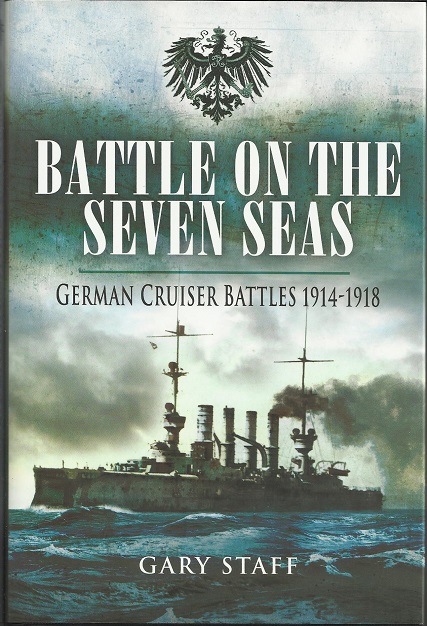| Steel Fleet | The Great War Annotated bibliography | ||||||
Contents
|
Corbett,
Sir Julian S, History
of the Great War based on official documents by direction of the
Historical section of the Committee of Imperial Defence Naval Operations
Vol 1 To the Battle of the Falklands, Longman, Greens and
Co, 1920 This
essential volume is referred to as the 'Official history of the war' on
the spine though it bears the following declaration within: This
essential volume is referred to as the 'Official history of the war' on
the spine though it bears the following declaration within:
Not merely the author's opinion, but his presentation of the 'facts as stated' itself is disclaimed. It has been averred that the Lords were unwilling to vouchsafe an opinion on Jutland, though the ongoing controversies of Coronel, if not Falkland Islands, probably warranted similar prudence in the absence of any resolution. Nevertheless this first volume of a vast, roving, substantial work offers the enthusiast refreshing variety beyond the usual operations which history typically has catalogued for this period. The author sustains a sober and authoritative narrative that reaches broadly about the Empire with relative equanimity toward the various commands and theatres of the Royal Navy; though later volumes cover the North Sea and the Jutland battle in understandably obsessive detail. Typically the choices and constraints facing the Admiralty are presented to the patient reader as events unfold globally in this first portion of the war. This first volume is accompanied by a slipcase of eighteen numbered loose-leaved charts which provide considerable detail on theatres, operations or specific battles described herein; we will make an effort to reproduce some of these where helpful to an understanding of battles or campaigns we're covering in pages here. These volumes are generally comprehensive, as befits an 'official' naval history, and are probably more notable for what is omitted than otherwise; it seems resolution of some public controversies, not least those arising from the Coronel and Falkland Islands battles, may have been purposefully avoided. Staff,
Gary, Battle
on the Seven Seas,
Pen and Sword, 2011 At Steel Fleet we are pretty excited about this book. It seems a guided tour for the naval wargamer of the surface gunnery warfare of the period. And with almost sufficient detail to start pulling out notepad and scribbling up scenarios just based on this source alone. Here's the setting for Coronel:
As a companion to H W Wilson's revered Battleships in Action for the First World War period one could do worse than this little volume and that is saying quite a bit. The author provides terse yet instructive context for the encounters and gives a detailed account of each engagement with the careful attention to surface gunnery which an official naval history of the big gun era might have provided; histories in which, one notes, cruisers have typically gotten short shrift. That this is now remedied, needless to say, is very satisfying to the aficionado of the period. There is enough material here to keep a game designer busy for a year; the even handed treatment of battles which did not merit much attention at the time is welcome and brings the battles of Ostergarn and Cape Sarych into the mainstream. We have already been discussing these as potential Steel Fleet games. Not to mention thorough chapters on Dogger Bank, Jutland itself and both Heligolands. The generous maps are new and detailed and compliment the narrative quite well; there is also a substantial number of new photographs of the vessels involved and the damage sustained in the engagements described, many from the author's own collection. This fairly small volume merits attention and could easily become the first reference reached for on this subject matter. Shaun Appleby 07 August 2014 |
